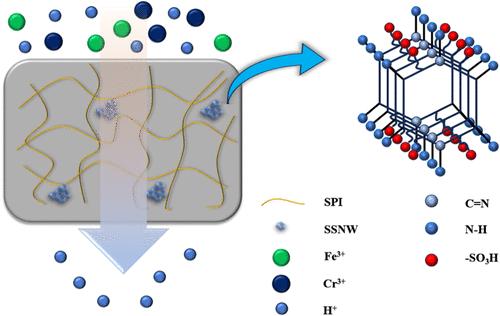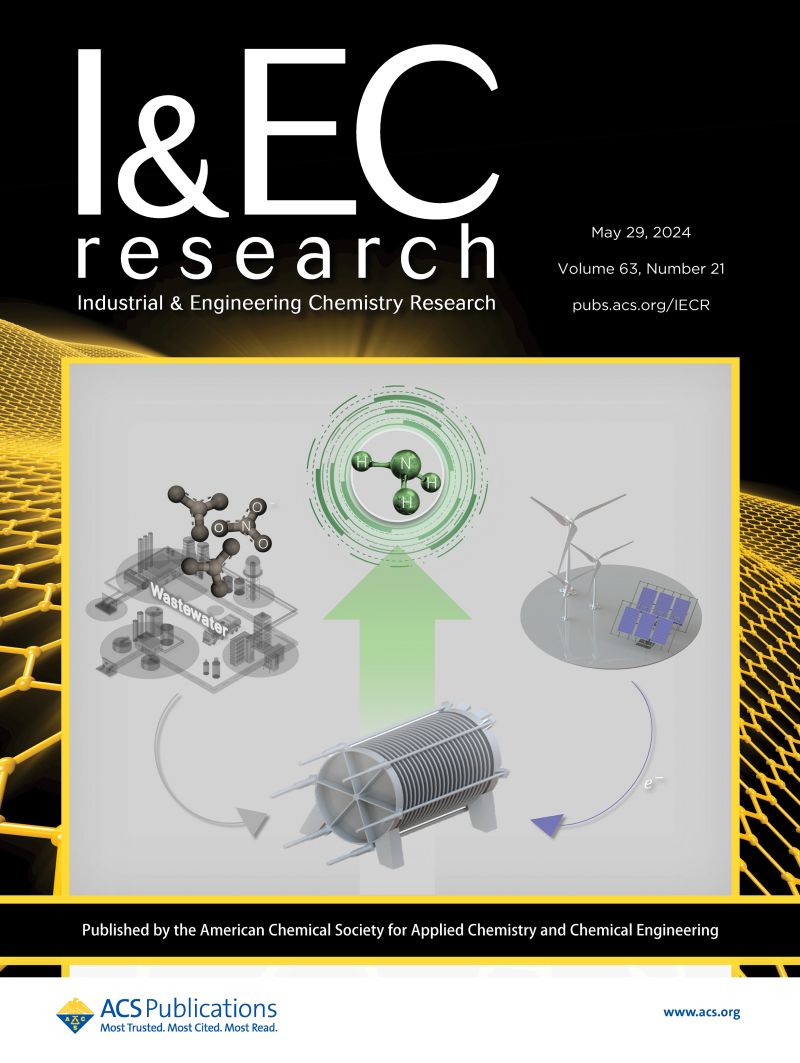A Novel Sulfonated Polyimide Composite Membrane Containing Covalent Organic Frameworks for Iron–Chromium Redox Flow Battery Application
IF 3.8
3区 工程技术
Q2 ENGINEERING, CHEMICAL
引用次数: 0
Abstract
Iron–chromium redox flow batteries (ICRFB), as the pioneering technology in flow battery energy storage, have regained research attention with advancements in the field. Despite their significant cost advantage, the capacity degradation due to ion crossover through ion exchange membranes remains a major barrier to commercialization. In addition, there are relatively few types of nonfluorinated ion exchange membrane materials currently reported in ICRFB. Herein, covalent organic frameworks, sulfonated Schiff base network type (SSNW), were introduced into sulfonated polyimide (SPI) to prepare a novel SPI/SSNW composite membrane for ICRFB. The hydrogen bonding network formed by the −SO3H group in SPI and SSNW, with the fluorine atoms in SPI and the nitrogen atoms in SSNW, as well as the size exclusion effect of the SSNW, effectively hinder the permeation of Cr3+ and Fe3+, which was further analyzed by electrostatic potential calculation. Single-cell performance tests revealed that ICRFB equipped with SPI/SSNW-1% membrane achieved 93.96% Coulombic efficiency and 76.40% energy efficiency at 80 mA cm–2. Compared with the Nafion212 membrane, the SPI/SSNW-1% membrane exhibited 17.74% higher capacity retention over 50 cycles. These results demonstrate that optimized sulfonated polyimide composite membranes are promising candidates for ICRFB applications.

求助全文
约1分钟内获得全文
求助全文
来源期刊

Industrial & Engineering Chemistry Research
工程技术-工程:化工
CiteScore
7.40
自引率
7.10%
发文量
1467
审稿时长
2.8 months
期刊介绍:
ndustrial & Engineering Chemistry, with variations in title and format, has been published since 1909 by the American Chemical Society. Industrial & Engineering Chemistry Research is a weekly publication that reports industrial and academic research in the broad fields of applied chemistry and chemical engineering with special focus on fundamentals, processes, and products.
 求助内容:
求助内容: 应助结果提醒方式:
应助结果提醒方式:


